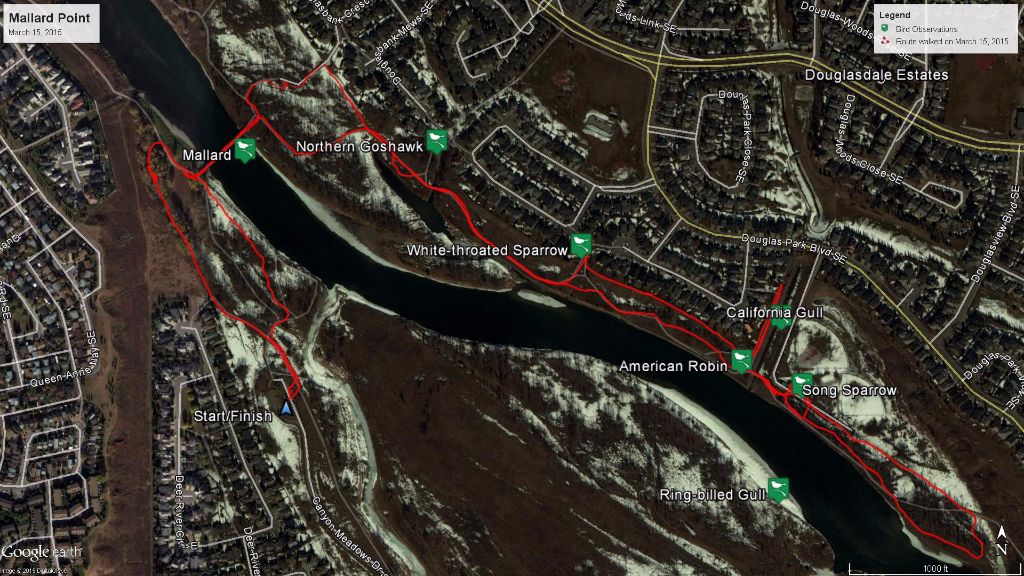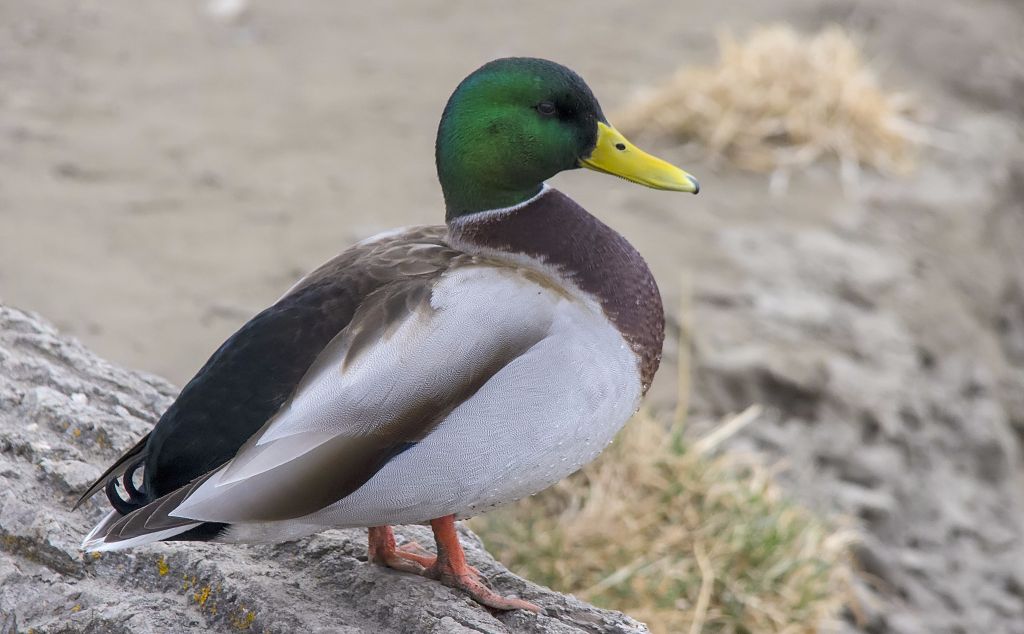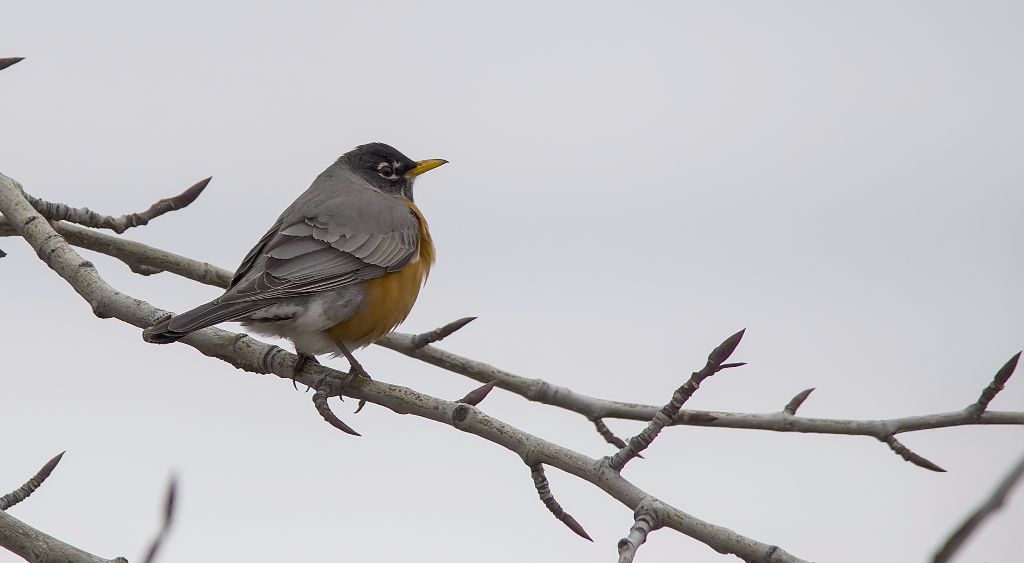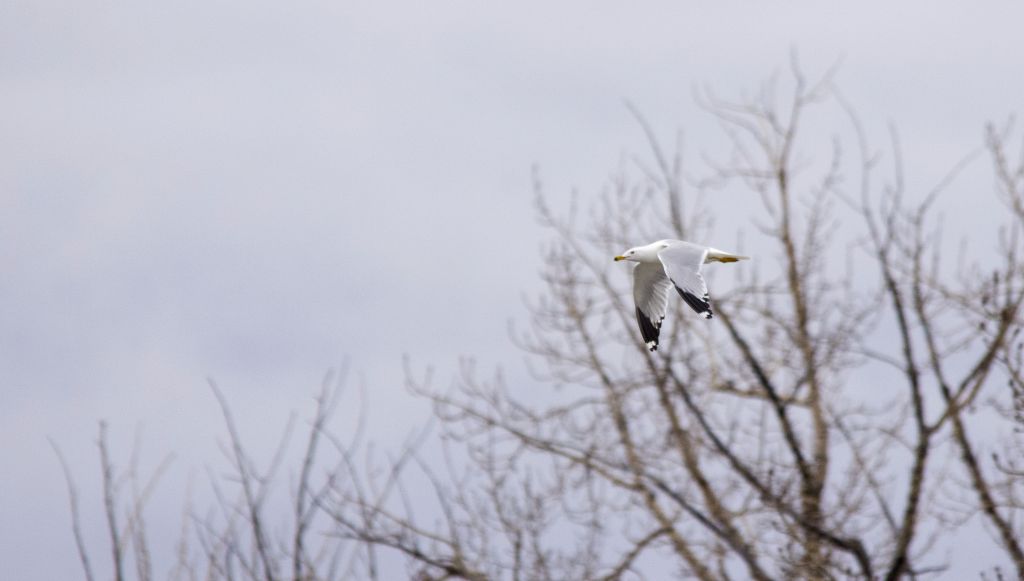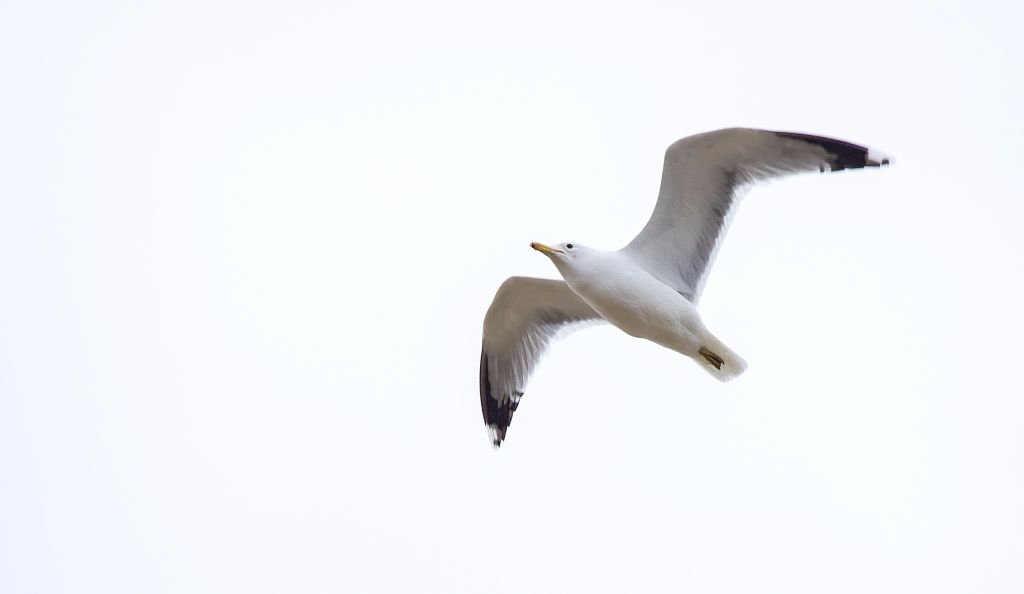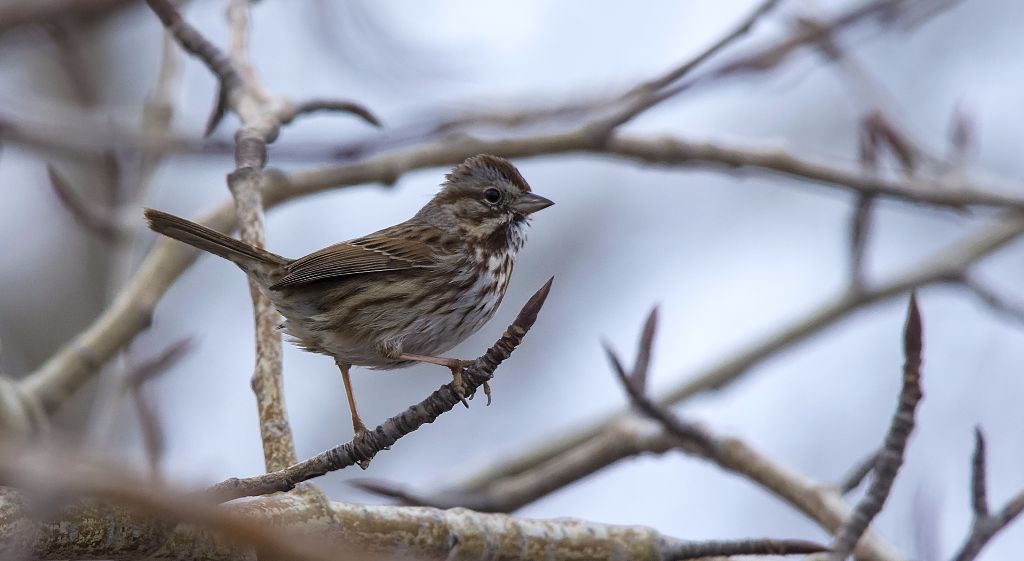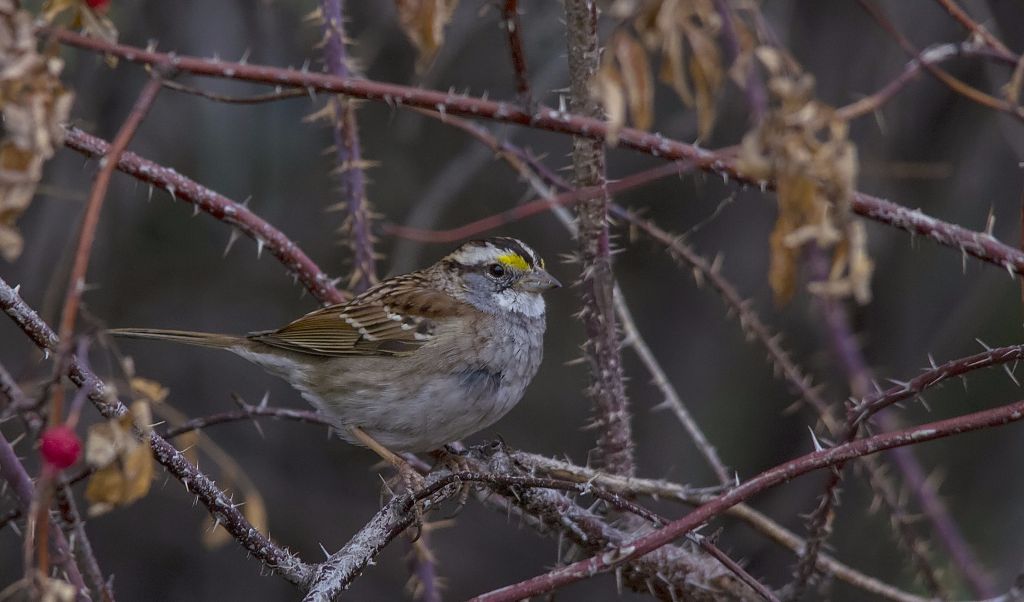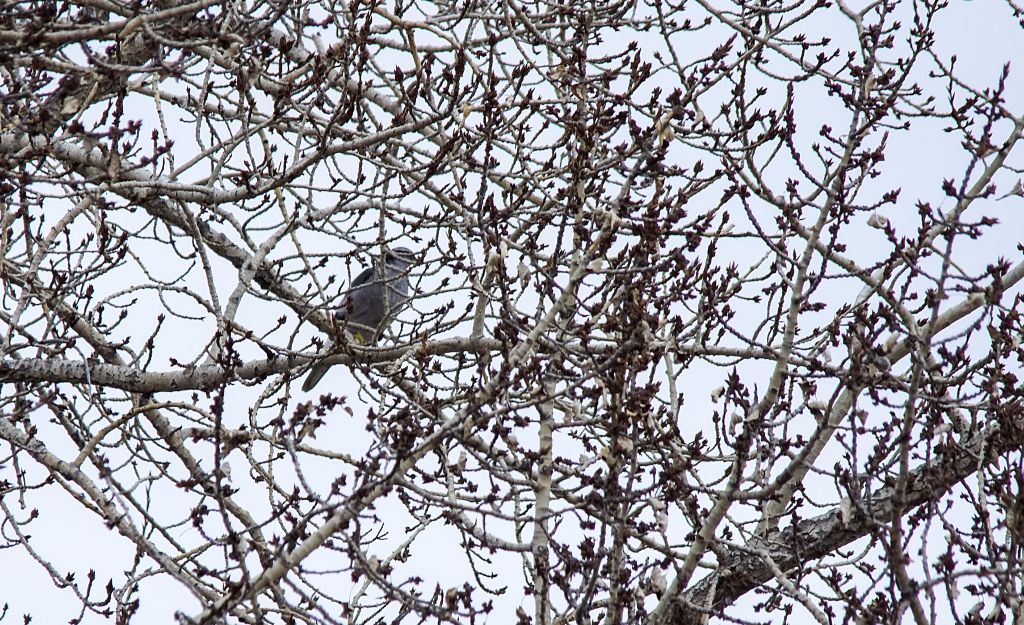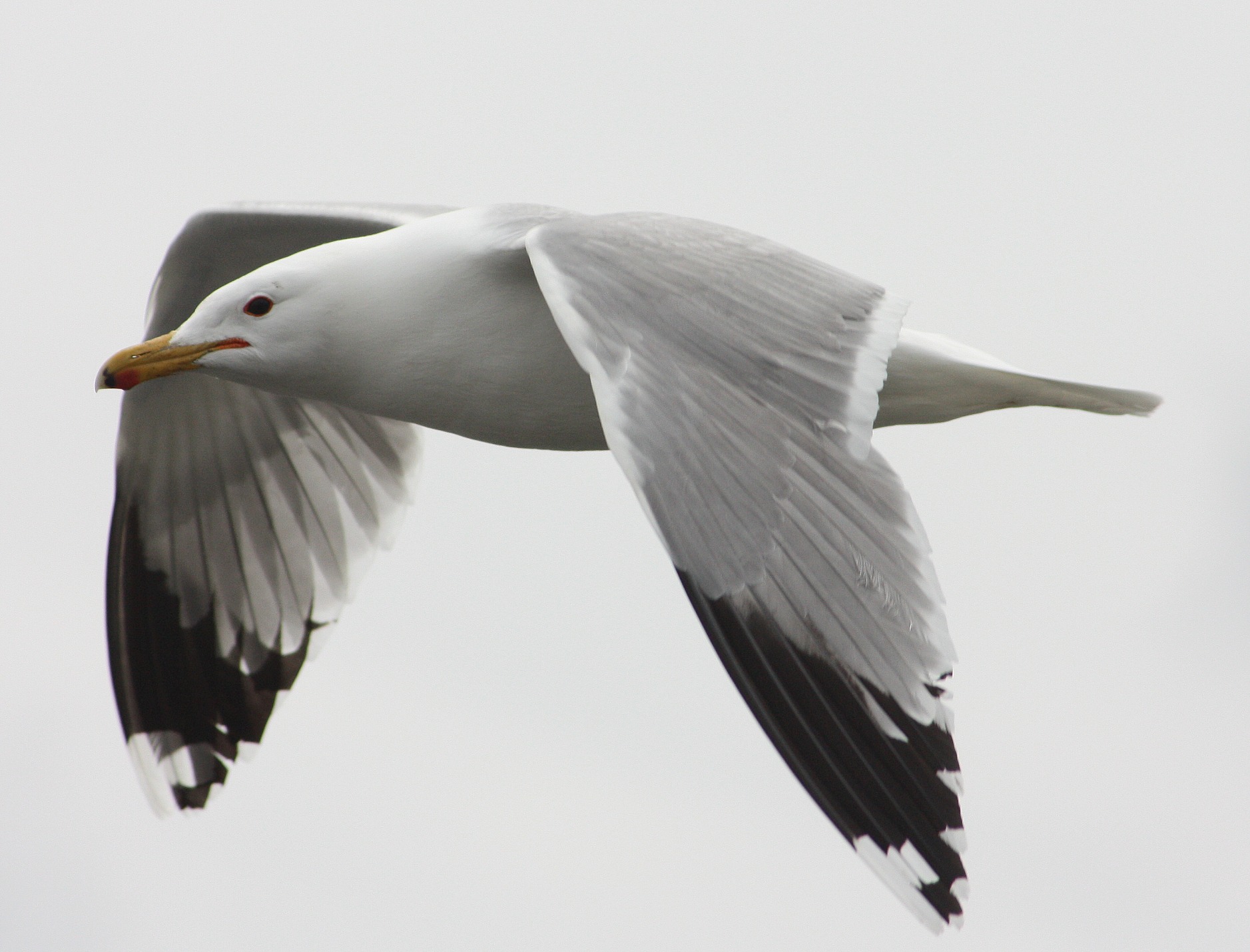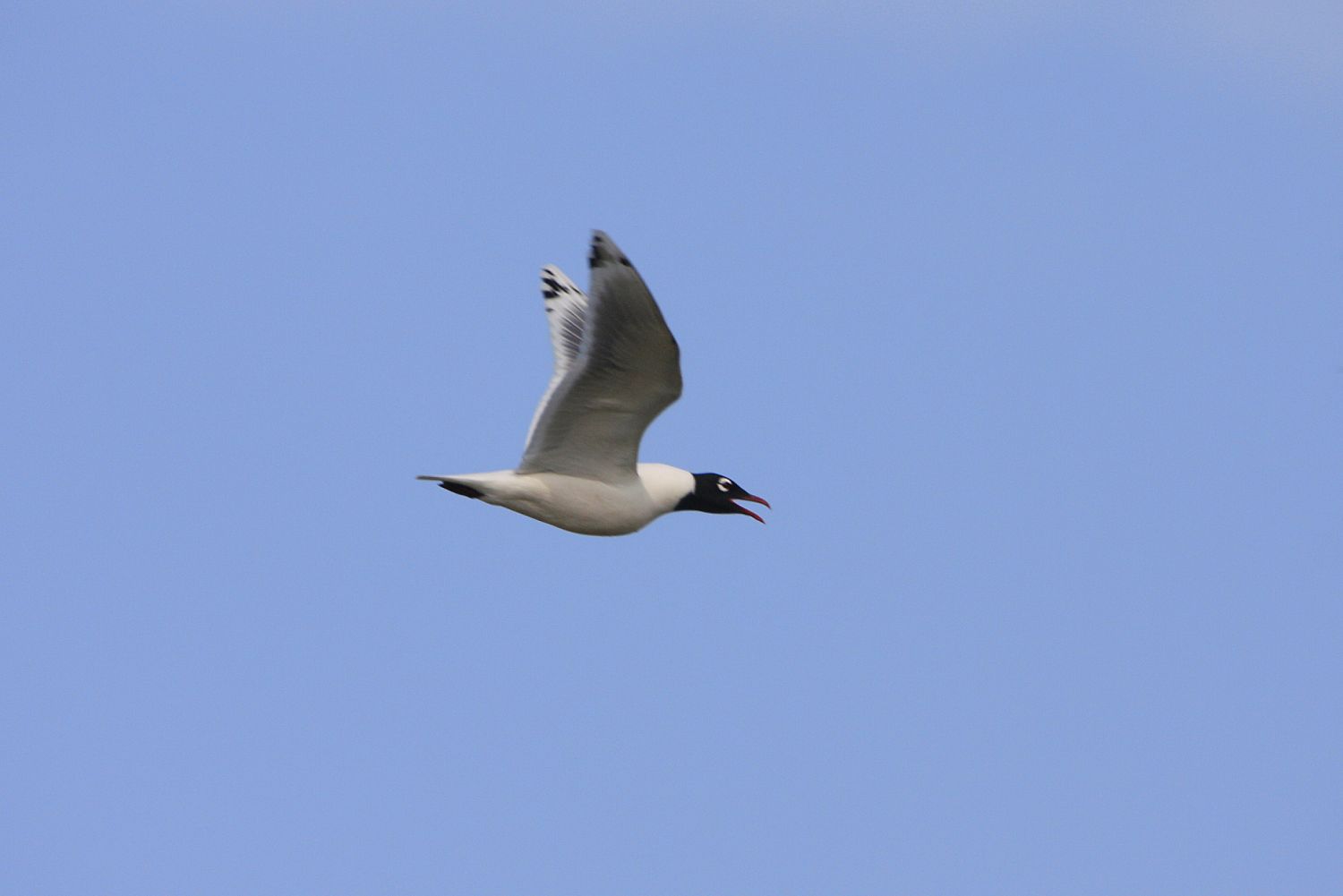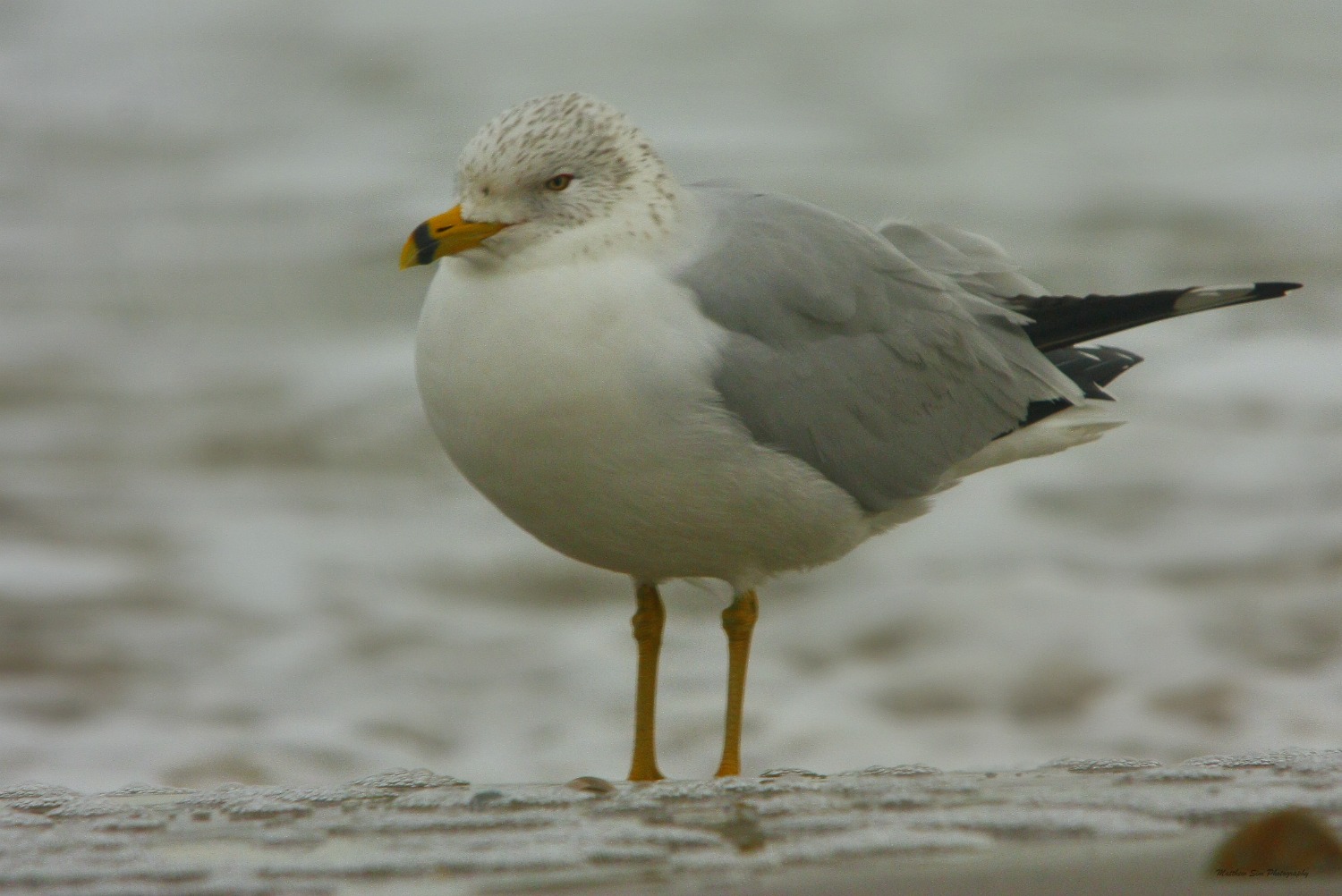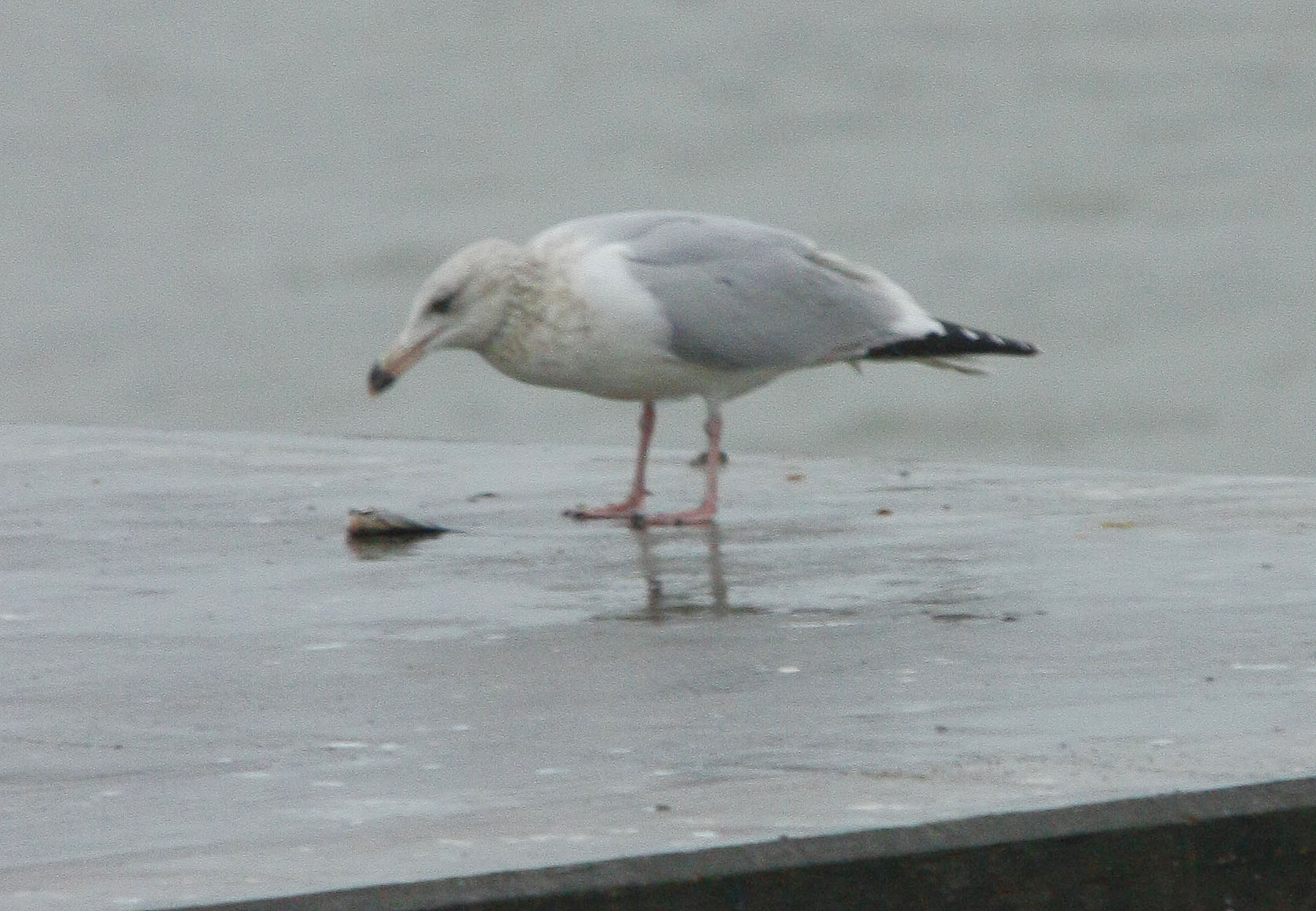Posted by Dan Arndt
Our outing to Mallard Point on March 6th was really geared to look for the first arriving gulls. With the exceptionally warm winter, and with many sightings around the city the for the week leading up to it, it seemed certain that we would find at least a few of them on the extensive gravel bars there. We did manage to spot one, and had a few other nice birds, but the haze, rain(!) and low gloomy clouds made it tough to keep motivated through the morning!
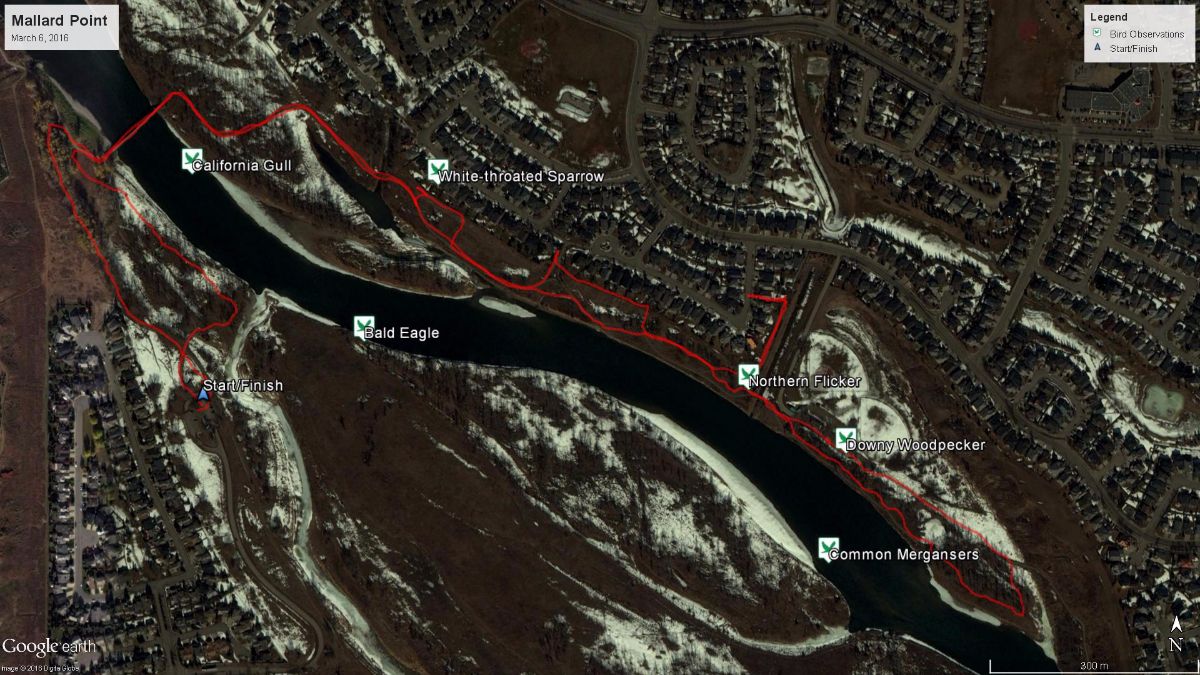
Mallard Point – March 6, 2016
The day was dark, dingy, drizzly and dreary. More typical of a morning in early April rather than March, but the early spring birds were beginning to return, and some overwintering birds were still around. I wasn’t particularly well dressed for the weather, and so we moved as fast as we could to try to stay warm. Here’s a tip: If you’re birding and the calendar says it’s still winter, it’s not t-shirt weather. Don’t try. You’ll freeze.
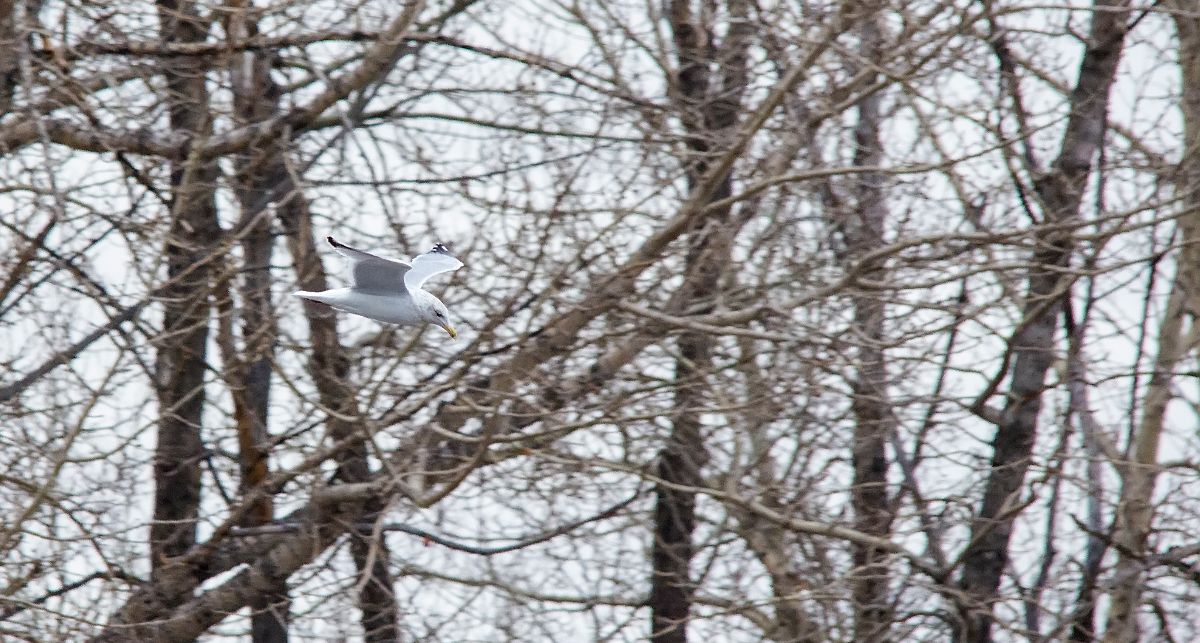
California Gull
[exif id=”15425″]
Our first gull of the season, and our only one of the whole day, was a solo flyby of a single California Gull. This is usually the first species that shows up in late February or early March, sometimes in small single digits, and very quickly joined by dozens of others over the following few weeks. Mallard Point is a great spot to find them most years, but in colder years when the Bow River is frozen up a little more, it is one of the few open gravel bars in the south end of the city. This year though, the entire river has been open for pretty much the entire winter, so they haven’t been found in any significant numbers within the city.
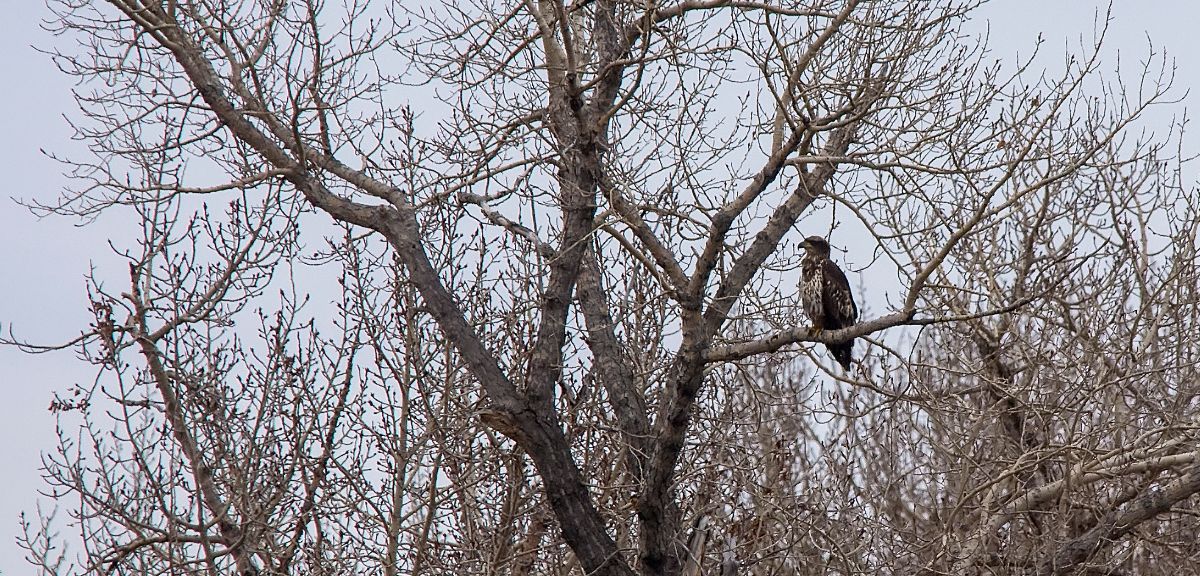
immature Bald Eagle
[exif id=”15427″]
This young Bald Eagle was perched off in the distance when we arrived, took a few flights up and down the river, then came right back to this spot. Another observation of the mild winter, these eagles have been able to spread out all along the length of the Bow River through Calgary, while in colder years we tend to find them grouped up in areas downstream of water treatment facilities, such as Beaverdam Flats, Carburn Park, and downstream of Fish Creek Provincial Park. Some years we see as many as twenty in a single morning outing!
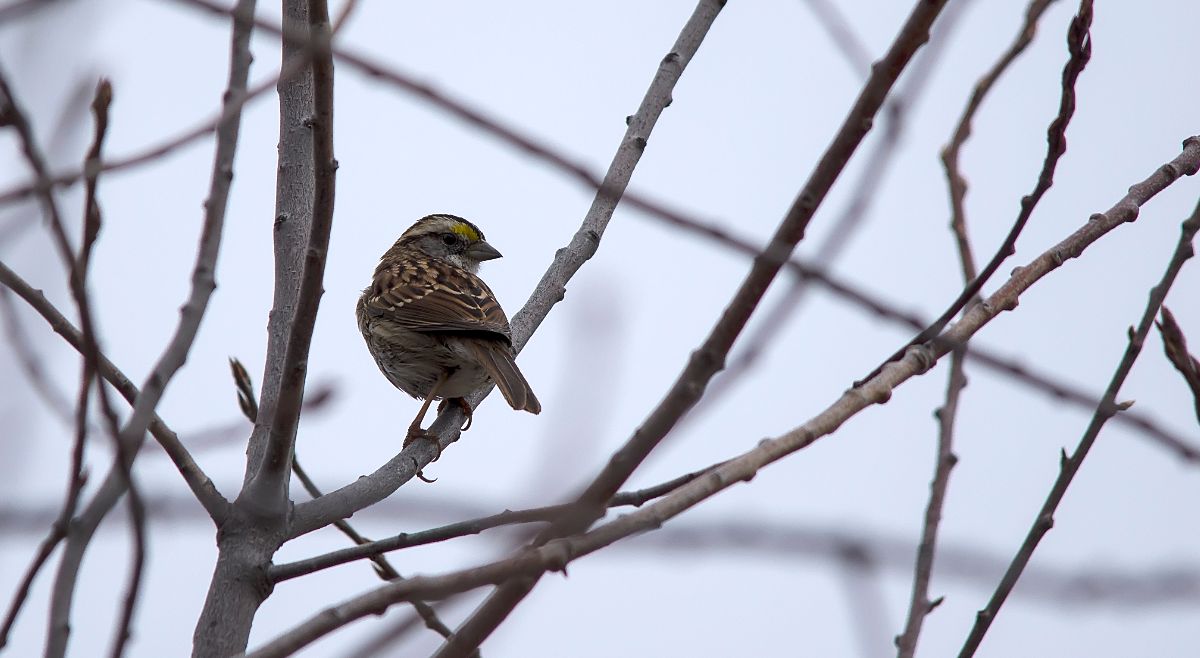
White-throated Sparrow
[exif id=”15429″]
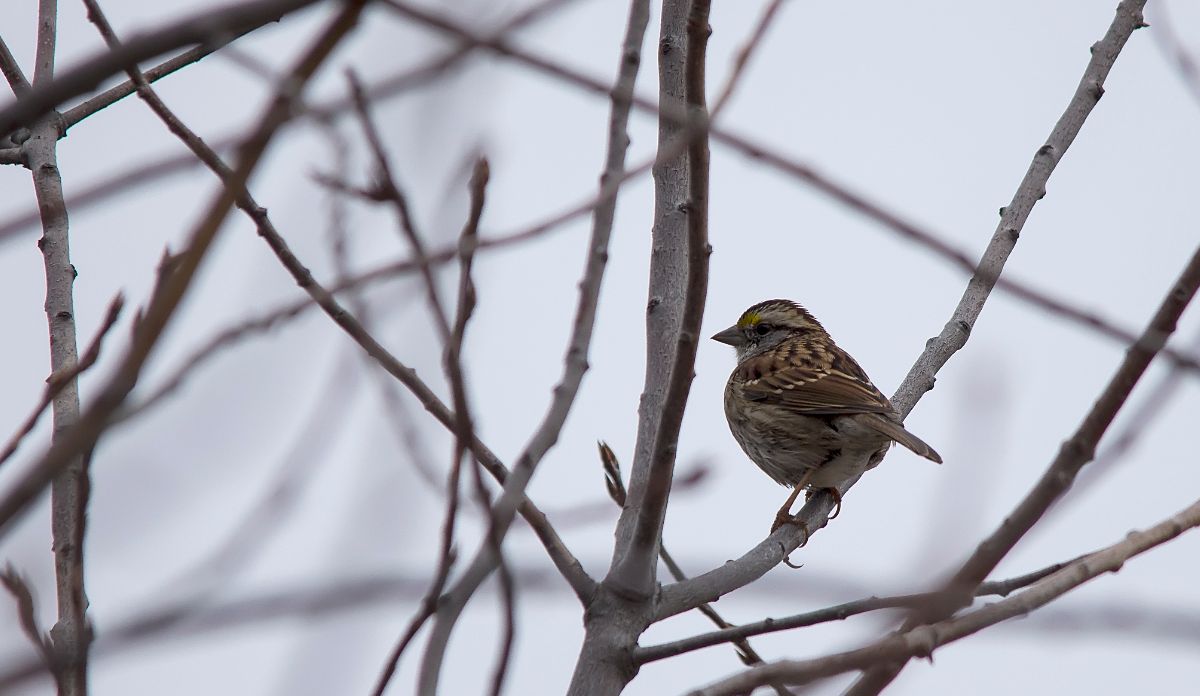
White-throated Sparrow
[exif id=”15428″]
Chirping away under the feeders at the houses on the east edge of Mallard Point was this White-throated Sparrow. Last spring around this time we found another member of this species less than a hundred meters away from here. I often wonder when we have sightings like this if it’s the same bird coming back winter after winter to the same spot. I guess there are a few ways one could research it though!
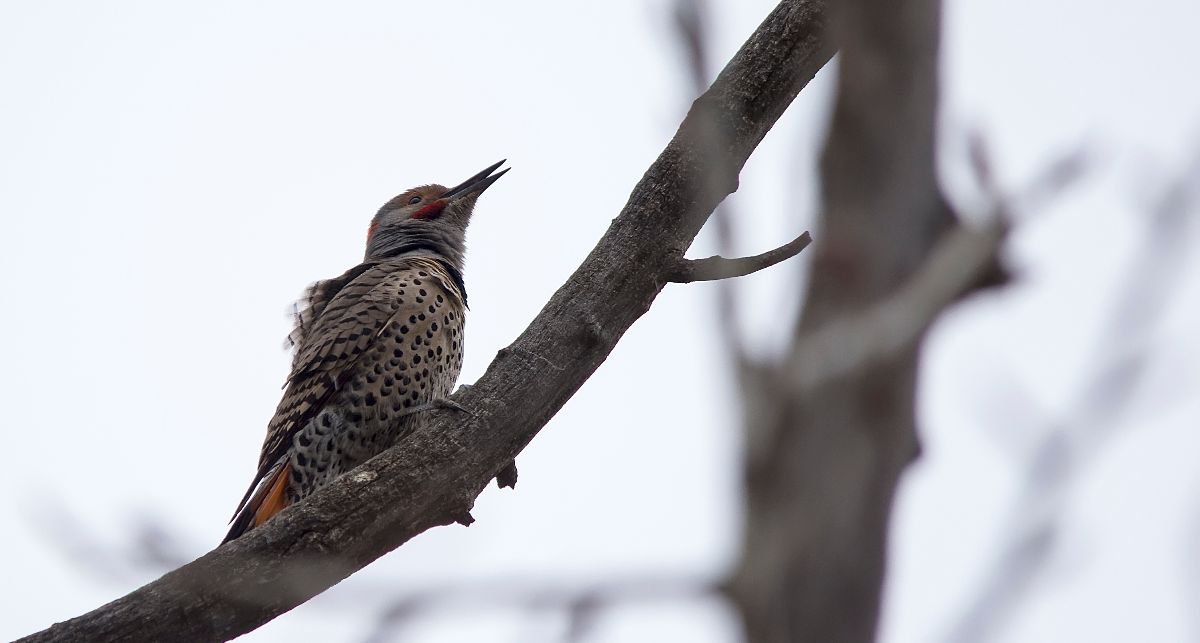
Northern Flicker
[exif id=”15426″]
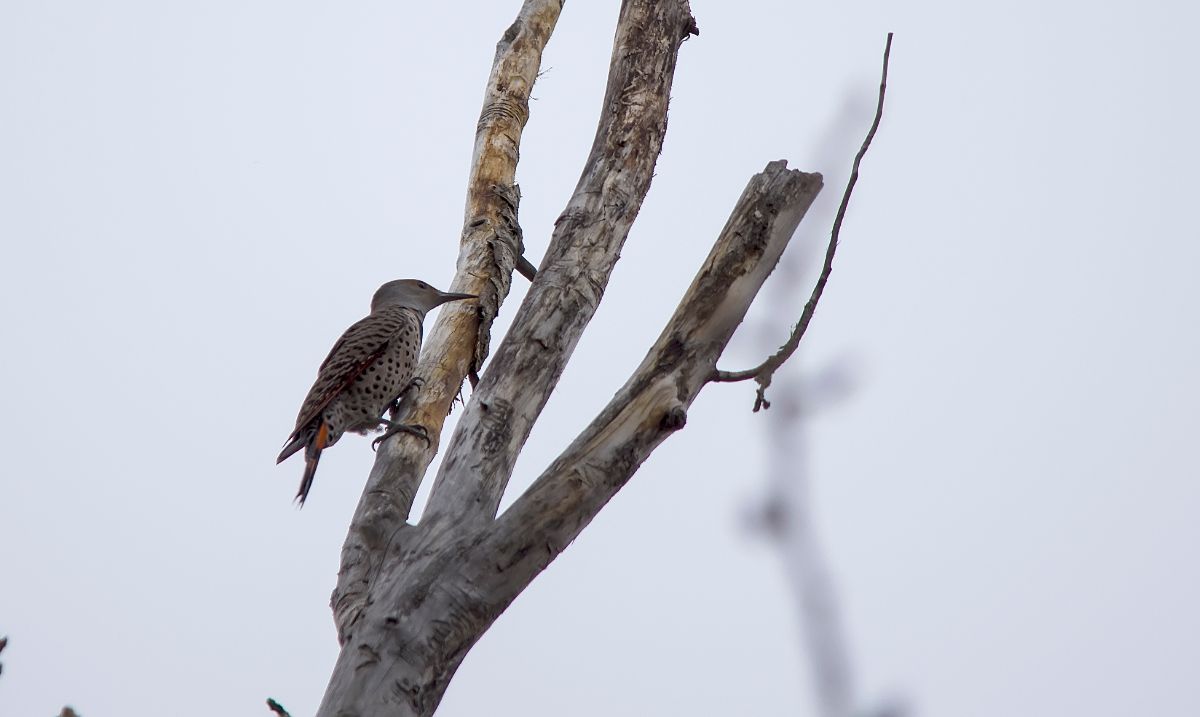
Northern Flicker
[exif id=”15423″]
There were quite a number of Northern Flickers calling, drumming and displaying throughout the morning, so many that there was a “high count” trigger on eBird when we went to submit the list! It’s always fun to watch them fly from tree to tree displaying and chattering at each other at this time of year, but not necessarily as much fun if they’re doing it outside your bedroom window first thing in the morning, or on the heating vent on the roof!
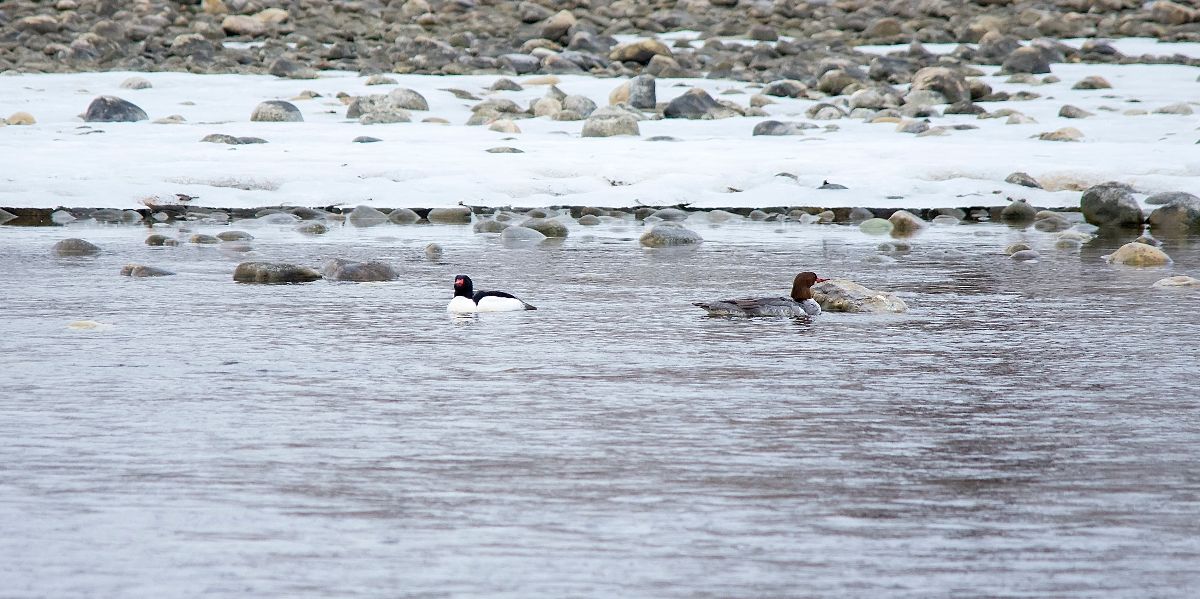
Common Mergansers
[exif id=”15424″]
This beautiful pair of Common Mergansers was further down the river, the male in his full bright white and iridescent dark green breeding plumage, and the female showing off her fancy head crest. Soon, she’ll be swimming along with a dozen or more young in tow, trying to keep them safe from the many predators both above and below the water.
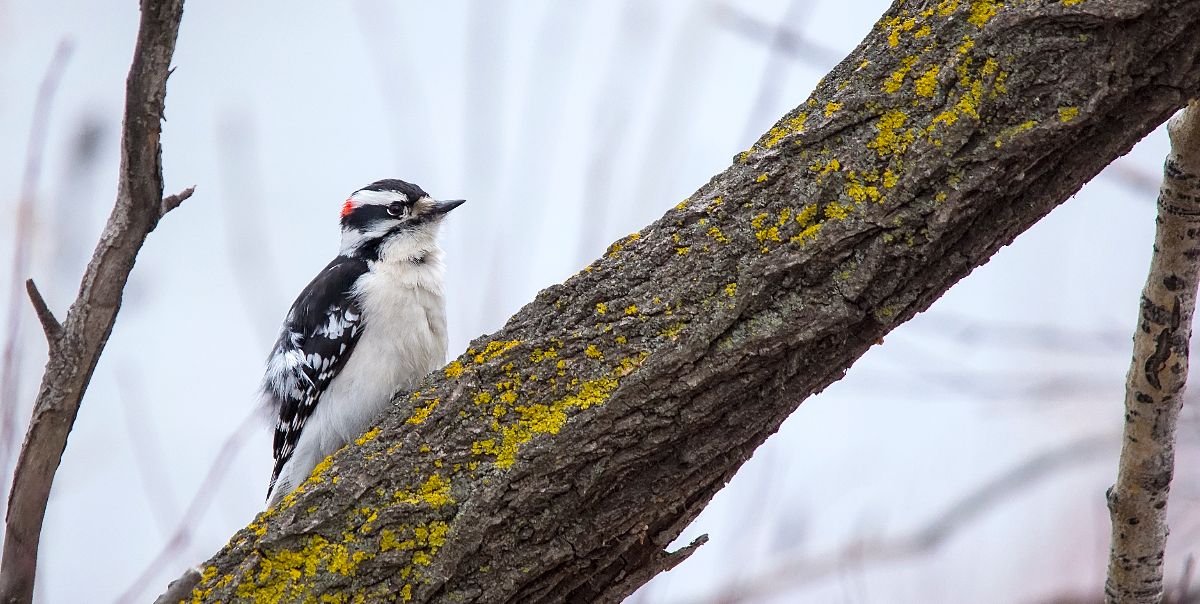
male Downy Woodpecker
[exif id=”15422″]
Our last bird for the day was this beautiful male Downy Woodpecker, who perched nearby and began drumming away while we watched. While he didn’t call in a female while we were there, his energy and persistence was rather obvious, and I’m certain he’s paired up by now and building a nest somewhere nearby.
Have a great week, and good birding!
